3 Things to focus your Content on in 2022
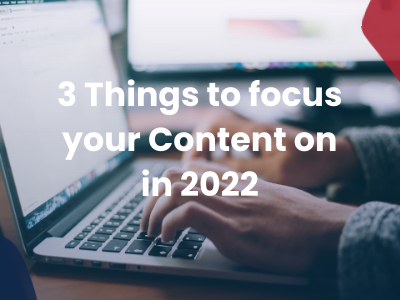
The end of the year always provides such a good time to reflect on trends and the direction we’re going! After a year with so many transitions across industries, privacy laws, and marketing channels, our focuses for next year have also shifted! One area to focus on in 2022 is content marketing.
If these last few years have taught us anything, it’s that content-based marketing really is one of the most important pieces of marketing. Your approach to content informs many aspects of business, not just marketing. Content covers all the ways you communicate. It’s tied to branding and mission and purpose and your focus. The type of content you produce helps you make decisions about marketing channels and our audience.
Content Trends 2022
With the rise of content marketing, ecommerce, and digital advertising, everyone acknowledges that social media, blogs, email marketing, etc. are all effective ways to sell people. The problem is that the very nature of content marketing erases the lines between education, entertainment, and sales. We have become so inundated with ads that our brains have been conditioned to go on the defensive when we feel like we are being sold.
An often-quoted marketing research study from 2007 found that the average American saw 5,000 advertisements a day. 5,000 ads a day pre-digital billboards, pre-Farmville, pre-Instagram, and pre-iPhone. Current estimates put the average number ads seen every day closer to 10,000. The 2007 study warned that number of ads cluttering our life would push for innovation in advertising that would in turn, create more clutter.
What can we do to cut through the clutter in 2022? Content marketing is an effective way because if done well, isn’t actually an ad and will actually reach the consumer.
Here’s three trends/focuses to incorporate into your 2022 content marketing.
Storytelling
This ties into the old writing rule: show don’t tell. Telling a customer how great you are won’t make them believe you. Showing them will prove it to them. But weaving a story around your product, brand, and successes will build an emotional connection between you and your customers.
Education
This goes hand in hand with storytelling and the inundation of advertising we all deal with. We have an excessive number of options to choose from. As well as our personal connection with brands, we use things like Social Proof to help us decide what products to buy. Brands can use this to their advantage by educating customers about their product instead of selling their product. The focus on pure information takes the pressure off the consumer to purchase. In turn, an educated customer is more likely to purchase.
Personalization
Even with increased privacy and data laws, there is more access to information about customers than ever. We often talk about personalized advertising in connection with retargeting and audience segmentation. It’s easy with personalization to focus on how specific and personalized you can get your advertising. ‘If someone clicks this and this and lives in these areas then we know all of this about them and can serve an ad for this specific product.’ That type of thinking is very valuable and helps you communicate effectively with your customers.
But personalized advertising doesn’t need to be that minute; it can be as simple as thinking about what channel you are using. Are you making blog content? What type of person reads blogs? You could build out a detailed buyer persona based on analytics and write with them in mind. That is very personalized! Or you could use common sense to tell you that most people who read blogs are probably interested in educating themselves, which also gives you a lot of information to personalize. The personalization can just be the focus of the channel. ‘These consumers are here to be educated, so we are going to educate them.’
Spotlighted Marketing Channel: CTV
Many marketers are using CTV (connected TV) or OTT (over-the-top) channels to target consumers using streaming services and connected TV devices such as Hulu and Roku. Advertisers are embracing these platforms as more and more ad space becomes available. Spending for CTV advertising grew from $6.94 billion in 2019 to $8.88 billion in 2020, a 28% increase.
Advertiser spent an estimated $8.88 billion on CTV in 2020
Read more about the future of CTV here!
What things are you excited to focus on in 2022?
The Value of the Social Proof Phenomenon
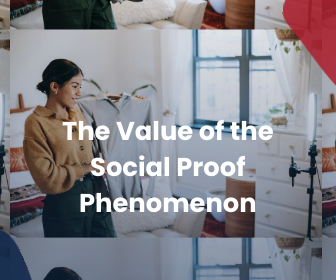
The Social Proof Phenomenon is a foundation piece of how our culture buys now. Between Instagram Influencers, Yelp reviews, and 5 star Amazon products, most of us make purchase decisions on the value others see in the product. How can Social Proof and online reviews work for you?
The Social Proof Phenomenon
What do online reviews have to do with “Social Proof?” “Social Proof” is the phenomenon based on the fact that it’s easier to buy things or trust companies if we know that other people already have. Our peers provide the proof of something’s value. None of us would buy something on Amazon with 10,000 1 star reviews. We trust those 10,000 strangers because that product connects us as a community.
“Social proof” is also part of the transparency that builds brand trust. Most consumers (almost 88%) research a business before buying from them. A lot of that research comes from reviews and reading what other people have said about their experiences.
What Can Social Proof Do For You?
Reviews can help educate consumers on your products and services. Reviewers usually talk about their specific experiences in their reviews. It can be an easier way for potential customers to learn more about what you offer.
Reviews Boost SEO. Specifically, Google Reviews. Google indexes reviews connected to your listing to help filter results. Especially for local traffic. “Best __ Near Me” is decided by reviews and stars. Customers will often use your keywords in reviews without even realizing it. This helps Google learn about you.
What Can You Do To Collect Reviews?
People are inclined to leave reviews if they a specifically positive or negative experience. Therefore, work hard to provide an overwhelmingly positive expertise for your customers! (You should be doing this anyway; the review is just a byproduct. 😉 )
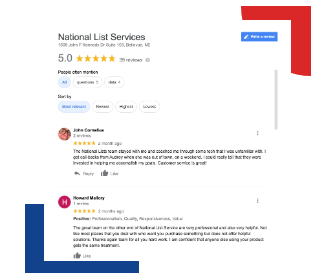
People like to do things for other people so a great way to collect reviews is to just ask for them! A follow up survey email after they buy from you is an easy way to this. Ask them specific, easy to answer questions about things such as: service response times, shipping times, product or service quality etc.
Make it easy to review you. No one has time to take 10 minuets following a complicated review survey with long required written answers. People are doing you a favor by reviewing you, show that you appreciate it by being respectful of their time and effort. Take out pain points of the review process: go through and make sure there aren’t any unnecessary steps or questions. Double check the user interface, id it easy to figure out?
Incentivizing your reviews (specifically ecommerce) is a big no-no! As temping as it is to show your appreciation for the review with a coupon or free shipping, or something: don’t. Both Google and Yelp have policies in place banning incentivized reviews. They will take the reviews down and give you a slap on the wrist.
What To Do With Reviews Once You Have Them
You have the reviews – now what? Here’s 2 ways to leverage them!
- Show them off
Let your reviews sell your product for you. Happy previous customers can be a great way to convince your potentials to buy from you! Show off your reviews on your home page with Google review widget or prominently feature some reviews as part of the design. Don’t forget to ask for permission first if you are going to highlight a specific review, especially if you are going to use their picture. - Engage with reviewers
let them know you appreciate them! It doesn’t have to be a big deal, simply liking the review or just saying thanks goes a long way. That little bit of effort can turn a happy customer into a loyal one. And a lot of marketing automation software makes replying to reviews across multiple platforms easy.
Do you have a favorite customer review?
While we are on the subject… leave us a review! 😜
Get the most out of Instagram – How?
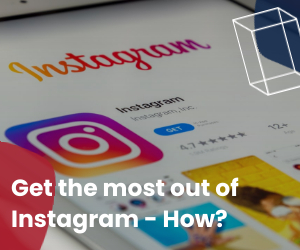
Instagram can be a confusing and overwhelming beast. It has its own constantly changing algorithm and culture that separates it from any other social media. Getting Instagram to work for you takes time, effort, insight, and unfortunately: intuition. What do you need to get the most out of Instagram?
Being an Instagram pro requires knowledge of 3 things: its culture, its algorithm, and your own analytics of those 2 things. Understanding the culture and the algorithm don’t do you much good if that knowledge is disconnected from your own follower and user data.
Instagram Culture
The biggest thing to remember is that Instagram is not Facebook. Facebook is for information, Instagram is for connections. And Instagram’s user base is generally younger than its big brother Facebook. More than 50% of Instagram users are between 18-35, while more than 60% of Facebook’s user are over 35. Therefore, these users have grown up with social media, including Instagram, and have shaped its function and culture. (For example, by the time my friends and I were old enough to have social media, Facebook was already too big and felt like something elusively for our parents. For a long time, Instagram was the only social media any of us had.)
Although Instagram is great for showing off products, the thing it is best at is highlighting your brand’s culture and personality. It is not enough anymore to have a good product available anymore, your consumers need to feel connected to your brand. 56% of Gen Z consumers say that having shared passions and perspectives is a major factor when it comes to their engagement with a brand.

And 49% of young consumers say they will evangelize a brand they feel represents their values, likes, and personality.
Don’t be afraid of incorporating causes you care about into your brands personality! 72% of consumers want the brands they care about to be positive contributors to society. We’ve seen in recent years that many brands (especially smaller companies) connect their core brand to a charity or cause they care about. Younger consumers are 69% more likely to buy from a brand that contributes to a cause.
The Algorithm
According to Instagram, they decide to show your content based on 6 factors:
#1: Interest
#2: Relationship
#3: Timeliness
#4: Frequency
#5: Following
#6: Usage
The first three are somewhat self-explanatory. Instagram shows you things based on what you’ve liked in the past. They highlight posts from people they’ve decided are close to you: people whose content you most engage with, the people who tag you, the people you DM etc. Instagram also cares about when you post. Keeping track of your analytics can give you a good idea about when the best times to post for you are.
#4 Frequency

Frequency isn’t about how often you post but instead about how often interact with the app. The more often you check your Instagram feed the more likely your feed will be chronological because they are always trying to show you the newest content available. This is helpful to understand what type of Instagram users your followers are. If they don’t check the app that often, then it will be harder to have your posts seen. Building up the other 5 components to the algorithm will be all the more important.
#5 Following
Instagram assigns value to follower counts in a couple different ways. First, is simple: the more followers you have the more likely your posts will be highlighted in your follower’s feeds. However, they also look at your follower’s engagement levels. If you have a lot of ghost followers that don’t interact with you, then they could actually be hurting you. Another thing to consider, the more people your followers follow the more competition for space in their feed. Do your followers follow a lot of people? Understanding that can help you decide if you need to adjust where you focus your efforts.
#6 Usage
This is how Instagram qualifies the amount of time spent on the app. The more time spent on the app, the deeper into its catalogs they have to pull from to show content. You can use this to your advantage by using hashtags or developing content that matches with the interests of Instagram’s heavy users.
How do you get the most out of Instagram?
How do these marketing channels stack up?
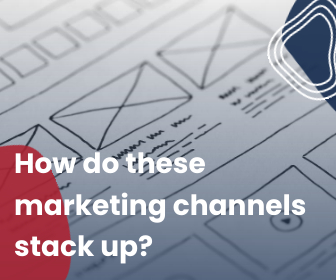
There are A LOT of different marketing channels out there. What are the pros and cons of some of the common ones?
Social Media
Pro
There are over 3.8 billion people on social media around the world. Social media is a fantastic way to connect with customers, build brand loyalty, and generate sales.
People don’t just want to buy from companies because they have good products and services. They want to know what your brand stands for in addition to what it sells. Social media can help potential customers get to you. Social media feel like a 1-on-1 conversation between the brand and consumer, which helps build loyalty.
Con
A lot of the value from social doesn’t show up immediately. It’s rarely simple to track social media’s ROI. Often the goal of social media is not just to generate sales but instead to build connections. Without measurable results, using social media can be discouraging.

Pro
Often it a brand’s only way to communicate with customers and can feel very one on one. A lot of millennial and gen z’ers expect to communicate with brands through email. Also, pretty much everyone has email so you know you will be able to communicate with people through email.
Con
We all get so. many. emails. Most office workers receive 127 every day. It can be hard to stand out from the crowd. People don’t have time to read emails that don’t actually provide them value.
Email marketing also has a lot of laws and rules connected to it that can hurt you if your aren’t careful!
Content/SEO

Pro
Customers often rely on a business’s website for information. Especially for local businesses, it can be the only way to know a shop hours or address. Putting the information on a website instead of a social media or directly in a browser legitimizes the information.
Good SEO gives your website credibility. It makes it easier for people to find your website when they search for it. And it helps create a smoother user experience.
Con
Bad SEO can hurt you. Most searchers never go past the first or second page of Google, though, which is why those top spots in the search results are so coveted. Having the proper SEO can prevent your website form getting organic traffic.
53% of all trackable website traffic comes from organic search. SEO is the main thing influencing how easy it is to find you online organically. Which is probably why it’s estimated that agencies and brands spent over $79.27 Billion on SEO services last year.
Google Ads

Pro
Where are people? On their phones. So, google ads is an extremely effective way to find people where they are. Google ads is great for brand awarness as well as retargeting. It is great if you want measurable results and analytics.
Con
Billboards, signs, posters, newspapers, and magazines all exist with in different physical spaces. With digital advertising however, we are all competing for the same ad space. That ad space is worth more now has less guarantees attached to it.
Trying to figure Google ads can feel like rocket science. There’s a large learning curve and it can a while to feel confident in the set up.
Print and Mail

Pro
Direct mail average open rate is somewhere between 68 and 90%, which is double, triple, or quadruple the average open rates of other marketing channels. Do people who open direct mail actually purchase? Yes! On average people who receive direct mail purchase 28% more items and spend 28% more money!
Why is direct mail so effective? It comes down to fact that we (humans) like getting mail. 41% of Americans of all ages look forward to getting their mail every day. We still want very real things in our hands, which is something totally lost in email inboxes or on social media. That tactile connection translates into 💰.
Con
Since Direct mail requires use of the postal system it has fixed costs. The graphic design of the mail piece may also have an additional cost. Using direct always requires a bit of math and if done wrong can hurt your ROI.
It’s not always posable to see direct, measurable results, from Direct mail campaigns. And if you can measure results, it may take a while to get the full picture.
Another thing that can be a disadvantage to direct mail is that you need a really good foundation of address data. The problem us that a lot of data providers don’t make sure that their data is accurate and that hurts the effectiveness of your campaign.
Connected TV

Pro
TV is a time-tested advertising channel. Although it’s a lot less common than it used to be, it can still be very effective. Many marketers are using CTV (connected TV) or OTT (over-the-top) channels to target consumers using streaming services and connected TV devices such as Hulu and Roku. Advertises are embracing these platforms as more and more ad space becomes available. Spending for CTV advertising is expected to grow from $6.94 billion in 2019 to $8.88 billion in 2020, a 28% increase.
Con
With customer attention spread so thin and cable tv subscriptions consistently falling, (over 16 million in the last five years) there’s a lot less advertising space available. Content consumption is at an all-time high and therefore, competition for viewer’s attention is as well. 84% of marketers say that it is getting harder to grab a consumer’s attention with television advertising alone.
Audiences today expect personalized and relevant targeted ads. Linear TV (cable and network television) often fall far behind in targeting capabilities. Therefore, it can be a challenge for advertisers to figure out how to integrate linear TV into their campaigns.
4 Internet Marketing Terms You Are Probably Using Wrong
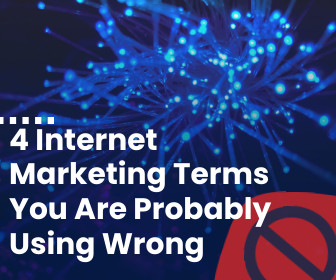
The internet and the marketing industry have something in common: They are full of terms and acronyms that can feel like an entirely different language. It can be super easy to misunderstand and/or misuse those terms. Here’s 4 “marketing/internet jargon” terms you are probably using wrong!
- Viral ≠ more views than you normally get
- Meme ≠ a picture with words on it. Please stop doing this
- Clickbait ≠ a catchy title
- Landing page ≠ a web page you’ve landed on
What do these words actually mean and how can you use them to communicate more effectively what you actually mean?
#1 Viral
What does it mean when you go viral? What makes something viral can be hard to quantify. There’s no magic number that means something is quote-on-quote viral. (Although MANY people try to make one.) Instead of defining viral by the numbers, it’s easier to quantify it by 2 things: reach and speed. The Wikipedia article on viral internet content makes the analogy that viral content is very similar to a virus. Viral internet content self-replicates and quickly spreads far from its original source. And often when content goes viral, it takes on its own life separate from what it was originally intended to be.
Let’s say one of your posts gets double or trip the amount of reach it normally gets. Is that viral? That’s very exciting, but no. Sorry! Although it’s possible to have something go viral with a specific community, viral implies exposure far outside it’s intended audience’s reach. With the number of platforms, and the cross-contaminating reach of those platforms, the general rule of thumb is over 2 million views in less than a few days to call something “viral.” This doesn’t mean that the content has to be a week old, it has to do with rate of expansion.
#2 Meme

This is one of my biggest pet peeves. It can be easy to look at a meme and think that any picture with words on it can be called a meme. It can be, but that doesn’t mean that it is. Meme was coined in 1976 by Richard Dawkins in his book on Darwinian evolution as an attempt to explain memetics; or, how ideas replicate, mutate, and evolve. What makes something a meme is not what it is, but instead the way that it replicates.
For example, the Star Wars “For the better, right?” meme has been a common format to use this month. What has made it a meme isn’t the original movie quote, or the format itself. It is a meme because many people are using or repurposing the format to convey information. Memes are only effective if the format conveys emotion or a message without it being explicitly stated and in a variety of different situations.

Although the types of memes we think of are usually in a concise image-based format, things like folk tales, urban legends, and chain letters are all versions’ memes. They are structured format in which information is shared and evolves.
#3 Clickbait
Are all catchy titles or hooks clickbait? No. The technical definition of clickbait is any text that is designed to entice a user to click or read on. However, the expression has a more specific connotation than that. It implies that the title isn’t accurate and is somehow disconnected from what you will see if you click. It’s similar to old school bait-and-switch marketing. Using bait or a hook isn’t wrong if you are looking to attract people, HOWEVER, the switch is wrong.
Clickbait is sensationalized content. An article titled “5 money making secrets you need to hear,” isn’t click bait if the article is actually about 5 money making tips. Which is part of what makes cracking down on malicious clickbait tricky. A lot of platforms like Facebook and YouTube measures in place to mark clickbait as spam. But how can AI decide if those 5 money making secrets are tips and tricks you actually need to hear? How does the platform know if those “secrets” can actually make you money? Clickbait is connected to consumer perception.
#4 Landing Page
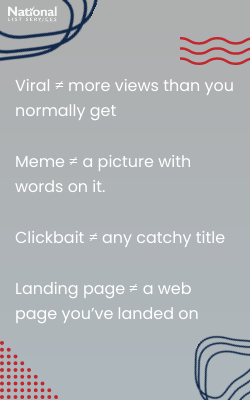
If you land on a webpage does that make it a landing page? No, because a landing page is a webpage you land on that is designed with a specific purpose in mind. One person illustrated it this way: You could use a baseball glove to retrieve a hot dish from the oven, but that doesn’t make your baseball glove an oven mitt. So just because someone lands somewhere doesn’t mean that it is a post-click landing page. The landing page could be designed get the user to make a purchase or fill out a form or watch a video. It doesn’t matter what the purpose is, it matters that it has one.
What is the advantage of separating your landing pages out to specify a single action? Research has shown that companies using 40 or more single action post-click landing pages generate 120% more leads than those using less than 5!
Do you have any marketing/internet terms misuse pet peeves?
How A Lookalike Report Helps You Increase Sales
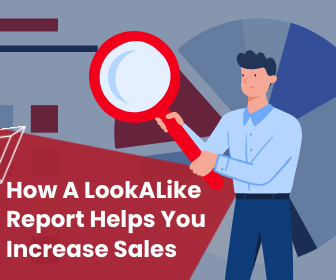
LookALike audiences have been a go-to targeting tool for almost a decade. Even before digital marketing, marketers used current audience demographics to target potential customers. With a growing number of AI tools available, businesses of all sizes have access to LookALike targeting. How can you use a LookALike Report to increase sales?
What is a LookALike Report?
Pioneered by Facebook in 2013, a LookALike report uses common attributes and demographics of your current audience to find more customers who “look like” them. These attributes can be anything from age and location to interests and hobbies. The more commonalities between your audience the more accurate your LookALike report will be.
Although originally only a tool on social media, LookALike reports are now available on many different types of platforms. For example, we often build LookALike reports with raw CRM data.
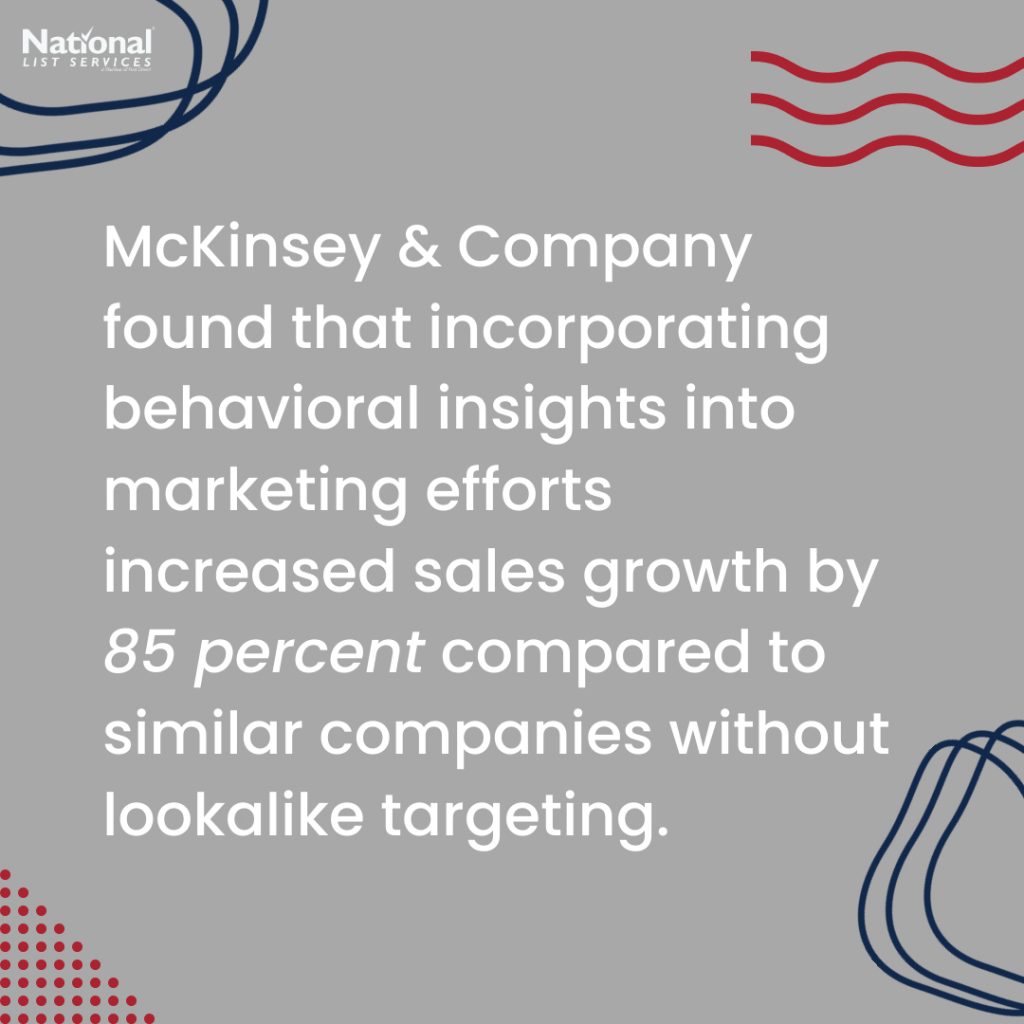
How to Maximize Your Report to Increase Sales
As great as it would be to dump all your current audience information into a LookALike report and get back a list of new customers, it usually takes a more finesse than that. Here’s 5 tips and tricks to take out some of the guess work.
#1 Define Your Audience
The goals of LookALike reports can be different so it’s important to start with the right data seeds or source audience. Since LookALike reports are based on the data you input, it really important that the data you start out with is accurate and will accomplish what you want. For example, do you want to find new customers that are like all your customers or like your best current customers?
The amount of data you can use to start with varies greatly. Facebook recommends anywhere between 1,000 and 50,000 people. Although they do say that starting with “a larger audience increases your potential reach but reduces the level of similarity between the Lookalike Audience and source audience.” Those differences between your source data and LookALike audience could be the difference between a sale or not.
Where can you get source data? Here’s three different source audiences:

- CRM Data
Seeds defined by existing CRM data match lookalike audiences with information gathered from existing customers, such as email, physical addresses, and phone numbers. However, this data is usually too broad and needs to be narrowed down to create an accurate base for a LookALike report.
- Social Media Engagement Data
Data from social media audience can also be used as a seed that a LookALike report is based on. This data is usually based on characteristics like page views and likes.
- Conversion Data
Source data based on conversion data are usually your “best customer” seeds. These are customers who have already competed and action with your business.
#2 Get Used to Segmenting Your Data
Building out your LookALike report will be a lot easier when you have a specific product or audience segment in mind. Knowing what you want to use this new audience data for will help you pick the right demographics to target. This is where audience segmenting comes in. Finding the right demographics will be easier if you already have your audience data organized or tagged by demographics.

#3 Connect Your LookALike Goals to Your Marketing Goals
Targeting using a LookALike audience can give you a higher ROI and help you reach your marketing targets. For example, if your company has found that you get higher engagements on mobile devices, you can build a LookALike report from those people. By targeting those people, you can direct your marketing efforts towards the audience most likely to help you reach your goals.
#4 Target and Retarget and Retarget
Targeting the right audience is effective, retargeting adds even more. Using a LookALike audience in a retargeting campaign adds to specific information gathered in the initial campaign. And since retargeting uses a lot of the same principles as building a LookALike audience, they go hand in hand.
#5 Switch Up Your Platforms
Facebook isn’t the only platform that supports LookALike reports. Many online platforms have LookALike audience builders built in. Switch up your platform to test new audiences and ways of reaching them. And as we mentioned earlier, we often use raw CRM data to build a LookALike report within our list system. The data we get from those reports can be used for any type of marketing.
Have you ever used a LookALike Report?
Your Marketing Needs These 9 Videos
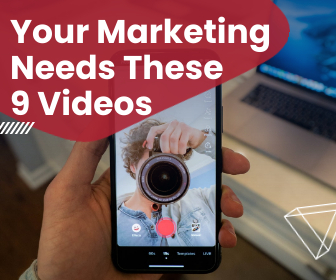
Did you know that are NINE types of videos your business needs? Gone are the days when the only video advertising was television commercials. Now, video is ever-present in our lives. For example, over 2 BILLION users log into YouTube every month. Just like any other tool available, as a business, your brand is going to need different things from different types of videos. Are you using all the kinds of video?
Since different types of videos are used for different things, it’s important to have a well-rounded video strategy. One that helps attract customers, educate them, converts, as well as creates customer engagement and builds relationships. Some types of videos that do that are webinars, promos, digital display, social content, and personalized videos for customers. Some of those are best when heavily scripted and polished, others are great when they feel quickly thrown together. What you need depends on what need you are trying to fill and where the target viewer is on their customer journey. It also depends on how much time, effort, and/or money to pour into video creation.
Explainer Videos
Explainer Video are quick 30-60 videos that explain who you as a company are. It’s basically a pitch video. They great for top of funnel interactions where you need to introduce yourself to potential customers and convince them why they should care about you. They work best when they are made with the audience in mind and feel personal. Don’t forget a strong call-to-action!
You can use Explainer Videos on your website, (think homepage videos) on social media, including YouTube, as well as in ads.
How-To Videos
How-to videos are great for any point of the funnel, can be just about any length, and be used for anything other than ads. However, they don’t need to be extremely high quality or super polished. A real person-to-person feel is more effective. The point of a how-to video is to explain something in a way that will provide valuable content to your audience. This is not the time for a hard sell.
How-to videos are super engaging online because it can feel like pulling back the curtain and letting your audience in on trade secrets!
Promo Videos
Promo videos are basically the general term for commercials. Think short, polished, story driven, exciting videos with strong call-to-actions. They can be used anywhere you need to promote something!
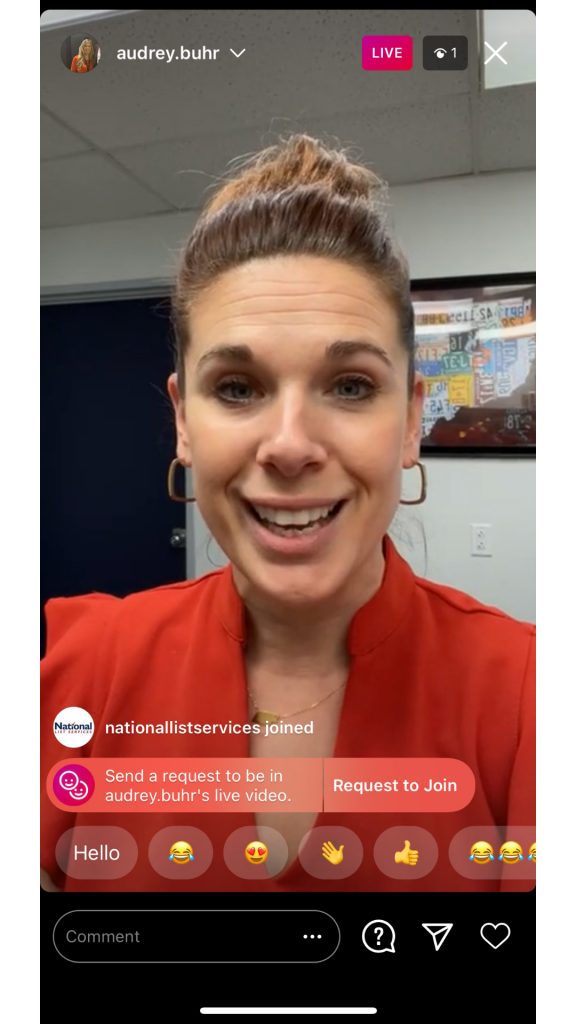
Talking Head Videos
Talking head videos could also be categorized as thought leadership videos. These videos are when you put yourself in front of the camera and share your personality and point of view. These are not designed for a hard sell but instead to show viewers your authentic self and brand personality. Talking head videos work best on social media and on YouTube.
Webinars
I’m going to include podcast videos here as well, (like the video recordings that most podcasts film while recording.) Webinars are inherently educational and therefore the focus needs to be on providing content for your viewers, not selling them. Most webinars are between 15-60 mins. And like in person seminars, they can take many forms: live Q&A’s, lectures, or panels.
Hosting a webinar takes a bit of IT knowledge so it’s totally ok to use a hosting service! It’s a good idea to have a moderator (and maybe an A/V guy) on hand for any troubleshooting or technical difficulties. After the webinar is finished you can make it available for on-demand viewing, as well as cutting the webinar up into smaller clips.
Case Study Video
A case study tells the story of how a real customer uses your product. It provides validation from a third party. Case study video work best when they are clearly planned out and polished. Include the customer/video star on the planning process, that will make the video more authentic. Focus the video more benefits rather than features and back up the information with data.
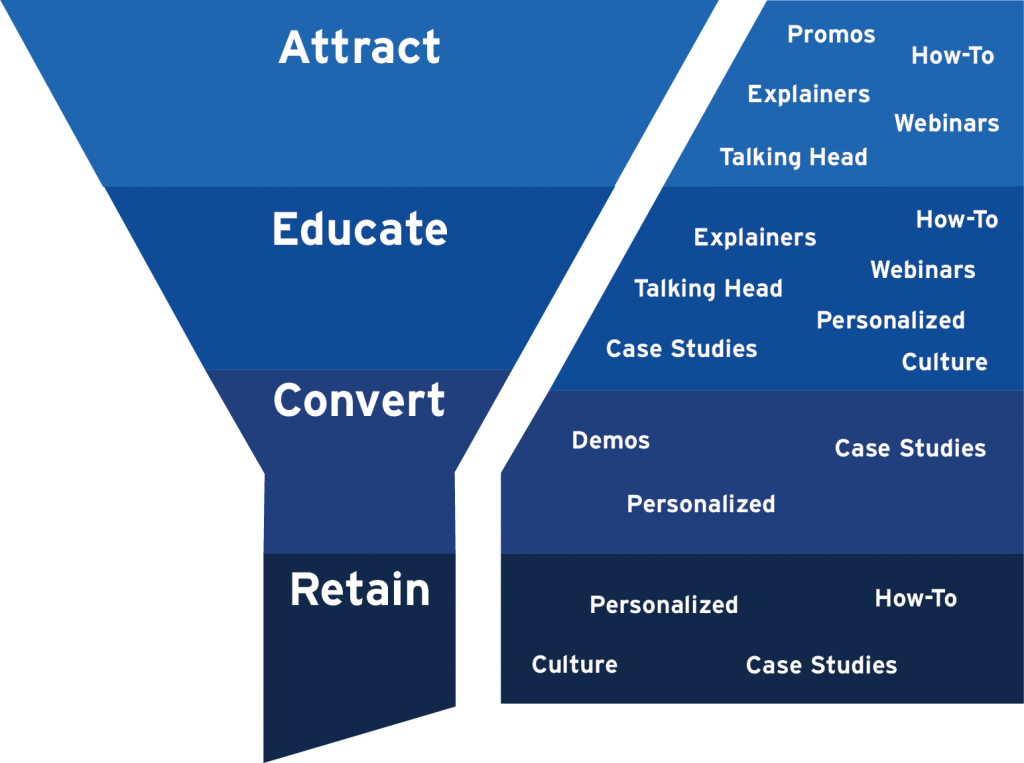
Fun/Culture Videos
These videos are a way to highlight your company’s culture and personality. They help tell your brand story and personality. Often these videos are narrative driven, fun, and humorous. A good example of culture videos is pretty much every company’s TikTok. They are quick and fun and feel personal.
Demo Videos
A demo video is a video that highlights how a product or service actually works. It’s there to educate and inform viewers. Keep the video as concise as possible. They can take a few forms: a broad overview, pre-recorded demo, or live demonstration. For example, we have broad overview demos of National List Services on YouTube, we prerecord demos to onboard clients or answer technical questions, (Loom is great for this) and we often do live demos when showing potential clients how our systems work.
Personalized Videos
Who doesn’t love a personalized video? Sending videos instead of texts or emails to clients is a big part of our follow up. It’s so much more touching to see someone’s face and hear your name than just a written follow up. Because of the nature of our business there are some clients we have never actually met face to face and sending them a personalized video can help bridge that gap.
So, with so many avenues and different types of videos, it’s easy to see why it’s such a popular marketing tool. How do you use video in your marketing?
Scared of Content Creation? Here’s 6 tips

Content creation is an integral part of marketing or running a business in general now. Even if you don’t think that you are a quote-on-quote content creator, you probably do create content. Every time you post on Facebook or update Instagram, that’s content. What are some easy things you can do to up your content game?
Here’s 6 things we have found to be essential in making quality content!
Know Your Audience
The content you create for one audience can be very different from another. Understanding the WHO is helpful first step.
It can also be helpful if you think of your audience as a single composite person. Instead of trying to talk to all of them, you are instead making content for one person. A lot of companies do this by making a buyer persona. That way you can think, “Would my buyer persona like this?” vs. “Would all my followers enjoy this content?”
Make a Plan
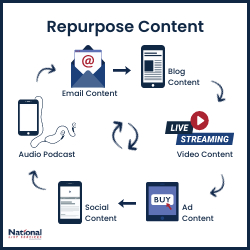
There is nothing more overwhelming than trying to maintain consistent content posting across multiple channels without a plan. It can feel like juggling snakes. 🐍 Making a plan can be as simple as figuring out what types of content you want to post and when it would be best to time to post it. The more specific your plan is the more you time you take out of the equation.
Part of making a plan is planning out your message and/or your angle. Now that you know who your audience is, think about what type of content would work best for them. Knowing what you want to talk about can make it easier to figure out what types of content would be best. Would your audience benefit from long form blog articles or would a TikTok series be more helpful? Both of those types of content take a lot of effort, so planning it out ahead of time is valuable!
Keep It Simple and Honest
Don’t make it harder than it needs to be. No matter who your audience is, needlessly complicated language or content structure isn’t appreciated. Simple and honest is always good. Remember, why you are making the content. Is it to promote you or your brand? Then tone of the content should match your voice. People can see right through any inauthenticity if you are trying to make something that isn’t you.
It’s easier to connect with a brand online if you feel like you are talking to a real person. Does the content you are making sound personal?
What is the Purpose of Your Content?
Why do you want to make this content? Keep the big picture of your content in mind as well as each individual piece. Are you trying to promote a specific product or service? Don’t be afraid to include a call to action in your content! A call to action is how to accomplish the goal of your content. It’s the follow through.
A good call to action is simple and concise. It uses strong verbiage. Give your audience a good reason to take the desired action. Don’t be afraid to get creative!
Take a Step Back
When it comes to content, it’s often valuable to take a step back and from your project and let it rest for a bit. The longer you work on a piece of content the easier it is to be become blind to mistakes, errors, and typos. You may be surprised by the power of fresh eyes!
An old copy writer trick is to proofread backwards. Instead of starting at the beginning of your content: start at the end. Because your brain is following a different path through the information, it sees things in a different way. Starting at the end allows you to look at it sentence by sentence instead of word by word or thought by thought. Knowing your content is edited well will help you feel more confident in posting it.
Another aspect of taking a step back from your content is revisiting old content. Repurposing or adapting finished content is an excellent way to stay inspired and make more content. There are always new things that can be added. Adding information keeps your messages up to date. Up-to-date content is more accurate and provides for value to your followers. Another reason to recycle content is that it gives more people an opportunity to see it. And even if someone has been following you for a long time there’s a good chance that they didn’t see the content the first time around.

Keep Consuming Content
This is my favorite part. 😜 One of the best ways to keep your own content sharp is to consume other content. It can inspire you, help you stay up to date with current trends, and keep your skill sharp. Most ideas don’t start in our heads, the spark is external. All of the creative juices it takes to create content can easily be burnt out if you don’t feed it with creative thing that you care about. Change your scenery, have conversations, read books or articles, watch a movie or show. Diversity of other creative inputs will refill your own creativity!
What’s your favorite type of content to create? How do you stay motivated in content creation?
Be Your Own Brand Spokesperson – Why?
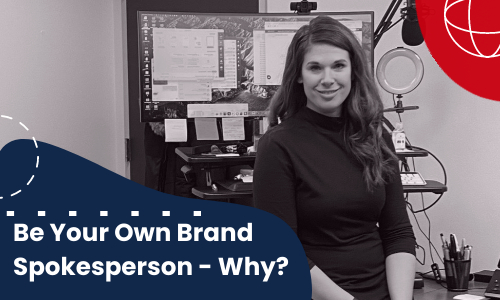
While branding your company most people focus on things like logos, colors, message. Which is all super important! However, in this visual digital world we are living, putting a face to the name (or brand, in this case) is very valuable. For example, pictures with faces in them are on average 38% more likely to get likes and 32% more likely to receive comments.
Here’s some specific reasons to use your face in branding and ways to do so!
Why Showing Your Face Helps Your Business
Here are 4 reasons!

- Using your face helps brand recognition
There’s a reason why brands use spokespeople. It is often easier for people to remember other people than it is to remember brands or companies. - It humanizes your brand
People like to work with people, not “soulless corporations.” Connecting your face to your company makes it easier for customers to relate to you and build an emotional connection. This is one reason why it’s helpful to use your face. Chances are that you and your company share the same values and goals. Having that message come from you and the company reinforces those ideals and helps other care about them too!
Another aspect of humanizing your brand is the trust that comes with it. It’s much easier to trust a person than a company; you know who they are and what they stand for. Linking you to your brand pulls that trust over.
- It creates engagement
Knowing who they are engaging with makes it easier for customer to connect with you on social media. Also, our brains are literally wired to find faces so putting your face front and center will help draw people to your content.
- It helps shape your community
This may sound confusing but linking your face and your brand can help create a more accurate and diverse business community. We all play a part in shaping the communities we are a part of. All of us have a story or journey to share. Highlighting your story along with your company story creates diversity. And you never know who your story will touch!
How to put your face front and center

Here’s some tips to get started
Show behind the scenes
Pull back the curtain on your day to day. Everyone loves behind the scenes. Showing what you are doing is a good way to ease into using your face for marketing. It’s can be simple to do, just bring your audience along to your tasks! It’s a good way for people to get to know you and all the things you. It also can help your customers appreciate all you do!
Use stories!
Stories is a great place to show all those behind-the-scenes shots. It’s also a great place to speak to the camera about your company and your mission. Stories get a lot of engagement but disappear after 24 hours so there’s a lot less pressure! To make it easier on yourself, prerecord your videos. Make “eye contact” with the camera, don’t look at your own face. Have a general idea of what you want to say, a bullet point list helps! And don’t worry about any word whiskers. The point of this is to help people get to know you and show authenticity. It doesn’t have to be perfect!
Go Live!
You might be surprised by how much more engagement live videos get! Unlike prerecorded videos, live streams make viewers feel like they are a part of the conversation. The more authentic interactions create more engagement. For example, on average, live content generates 10x more the comments that prerecorded videos. And people tend to watch live content 10-20x longer.
We want to see your face! How do you connect your personal brand to your company brand?
The Best Social Media Platform For You
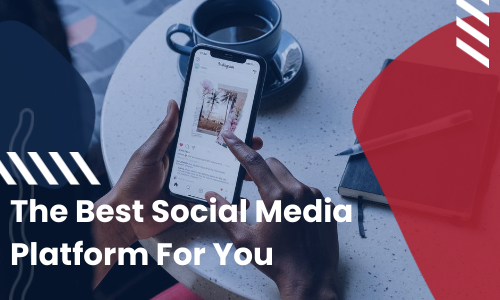
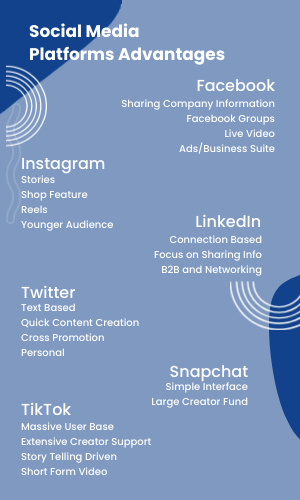
There are so. many. social media platforms available. Each have their own flavor and specialty. It can be overwhelming to figure what platforms are the best fit for you and your company.
Ideally, the answer to what platform should you use is: all of them! There are many tools and social schedulers available to make it easier to post to many accounts and platforms at once. However, even if you are able to consistently post to a wide variety of platforms, it is helpful to understand what each platform excels at. And, what each platform needs.
Let’s break it down:
Facebook has roughly 2.8 billion monthly users, and because of that, Facebook is in a lot of ways a necessary evil. Since Facebook owns some of the other platforms, having a Facebook business account is a necessity. From a content standpoint, Facebook really excels at four things.

- Sharing company information. Facebook (and Google my Business) are often the first place updated about hour changes, services, locations, etc.
- Facebook groups. Facebooks groups are an excellent way to build micro communities online. For example, we are a part of Facebook groups for specific SaaS products we use, different communities like the 10X community, as well as groups to network with like minded businesses. Because these groups are often moderated, they can provide a safe place.
- Live video. Facebooks live video and event scheduling feature is one of the most robust available. Because of Facebooks integrations with Instagram, it’s easy to stream to two places at once. Facebook catalogs video internally, meaning that Facebook video doesn’t help general search engine SEO, which is something to keep in mind.
- Ads. Facebook has its own ad platform that only works with their family of applications.
Instagram constantly adds features, so even though it started out as a purely visual platform, its effective for all businesses. Here’s some things to keep in mind about Instagram:
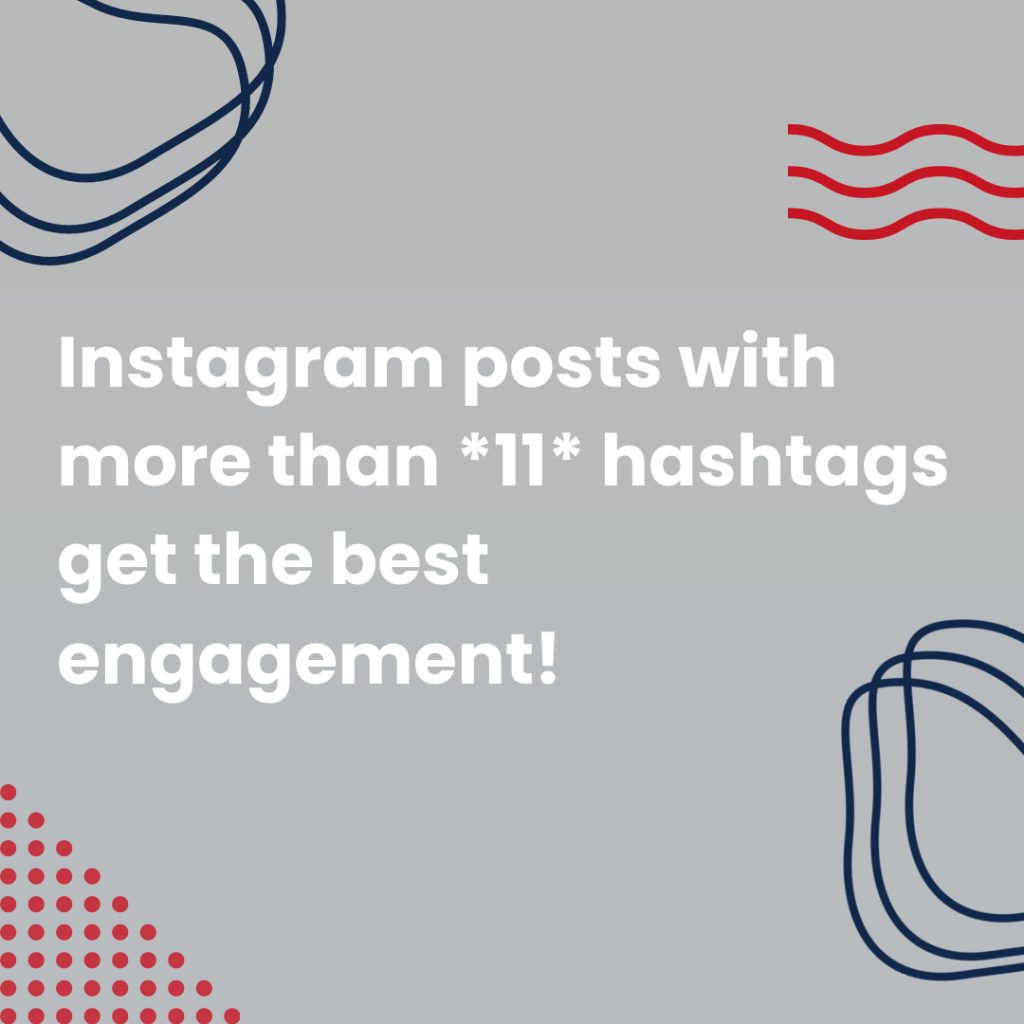
- Instagram stories have high engagement rates. They are great for creating authentic interactions with your followers. And they can be shared directly over to Facebook stories.
- Instagram shop feature is very comprehensive and easy to use. If you are a business that sells physical products, having an Instagram shop set up is very beneficial.
- Instagram Reels take parts of TikTok and YouTube and combine them together. Unlike, TikTok they don’t have a 1-minute time limit so you can say a lot more. Live video scan be converted directly to Reels.
- Instagram’s user base is generally younger than Facebook. More than 50% of Instagram users are between 18-35, while more than 60% of Facebook’s user are over 35.
LinkedIn has started to shift away from a purely networking platform to an information sharing platform as well. They recently added a live video feature and seem to be working to towards taking some of Facebook’s power away as the B2B social.
LinkedIn posts that are not self-promotion work well. It’s a great place to pull over blog information and transcriptions/scripts from live videos.
LinkedIn is all about connections, and interactions that are mutually beneficial. If you can find the right audience or community, chances are you will get a lot of engagement and connections.
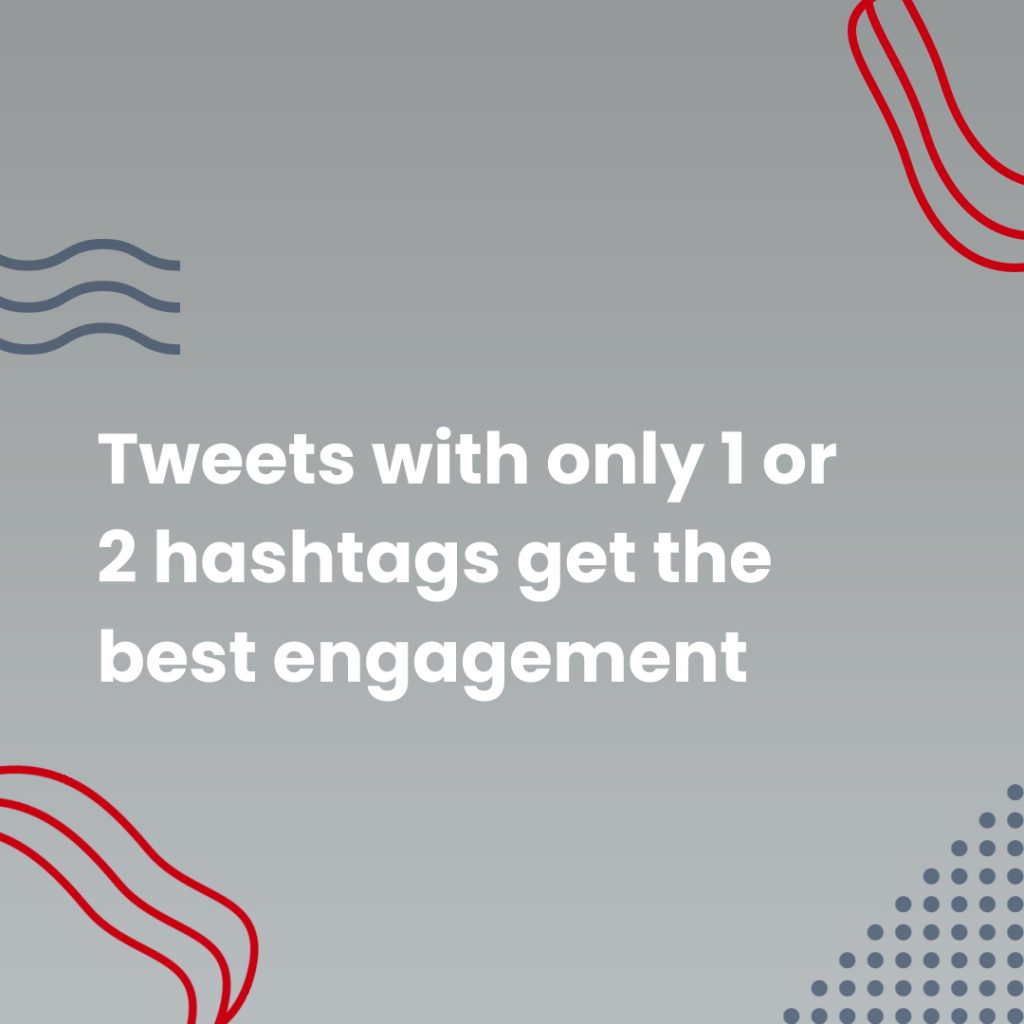
Twitter is easy to use and easy to generate content for. The snappy text-based format pushes engagement. Twitter is great for cross promotion across platforms. Screenshots of Tweets work well on other platforms. And Twitter is great for sharing links to your own content as well as highlighting other things you care about.
Twitter is also great for building personal relationships with followers. The stream of consciousness format can feel like a personal one-on-one conversation.
Snapchat
You may be surprised that Snapchat is included on this list. Snapchat’s audience skews very young which often eliminates it from company’s marketing plans. The platforms interface also makes it difficult to brand yourself and to find new followers. (Unlike most other platforms, Snapchat’s “explore” page doesn’t usually promote accounts to follow.)
However, Snapchat recently launched a creator fund. They have made extremely easy to get money as a creator on the platform. They seem to have learned from past mistakes and are pushing creators to use the app. (Many people reported making 6 figures in their first month!)
TikTok
TikTok is not just for the kids. It has a massive user pool, extensive creator funding, and a simple structure. It’s relatively simple to leverage their algorithms to your advantage. And since it’s a few years old at this point, there are established content formats and trends you can use.
It’s short form (60 seconds max) video format is great for storytelling and building personal relationships.
Many companies use it as an almost “behind the scenes” look at their day-to-day work. That type of content is great for engagement and creating brand loyalty.
TikTok is highlighting your personality or company culture.
What social media platforms do you view as essential?
Want help with getting your social media marketing rolling? Let us know!
